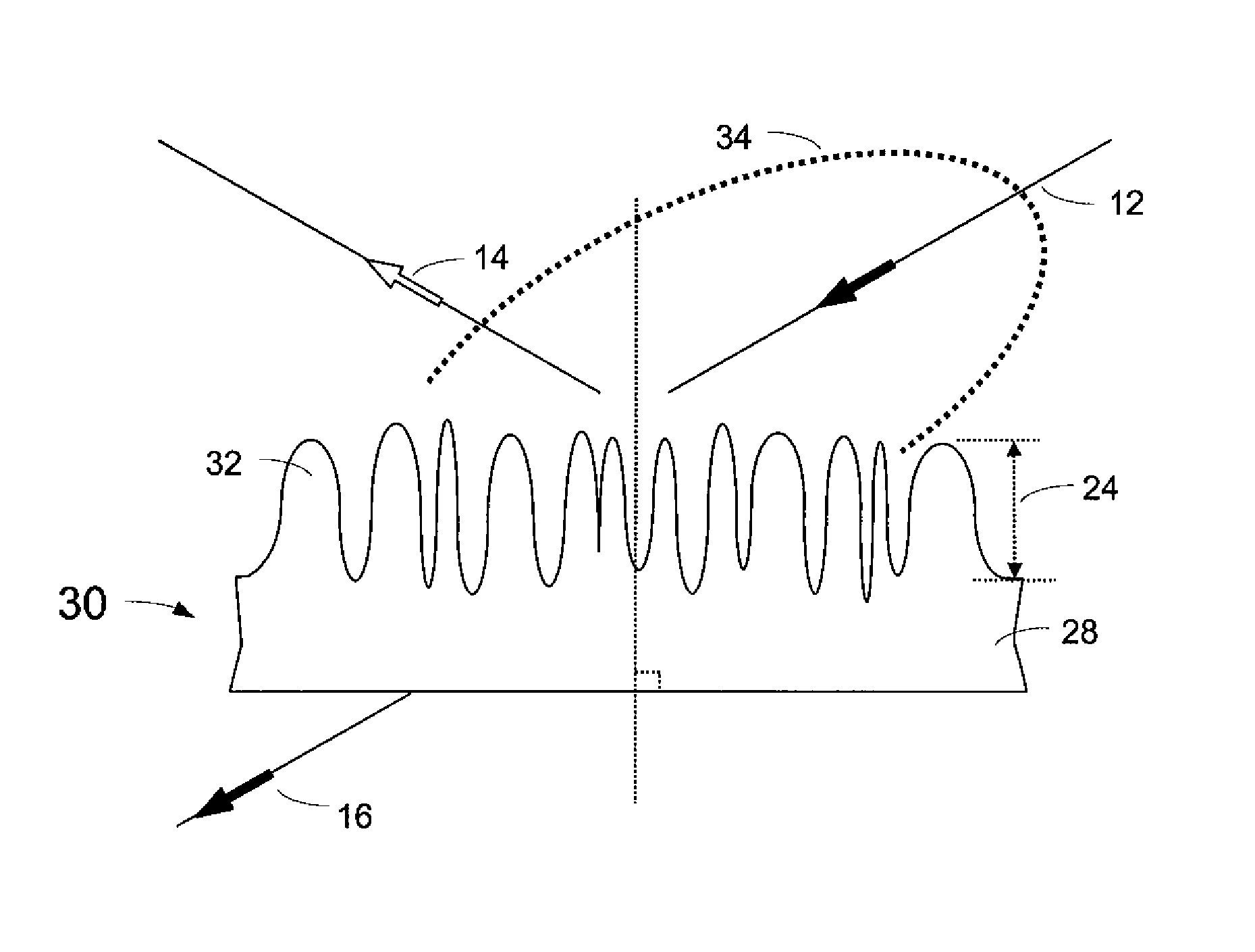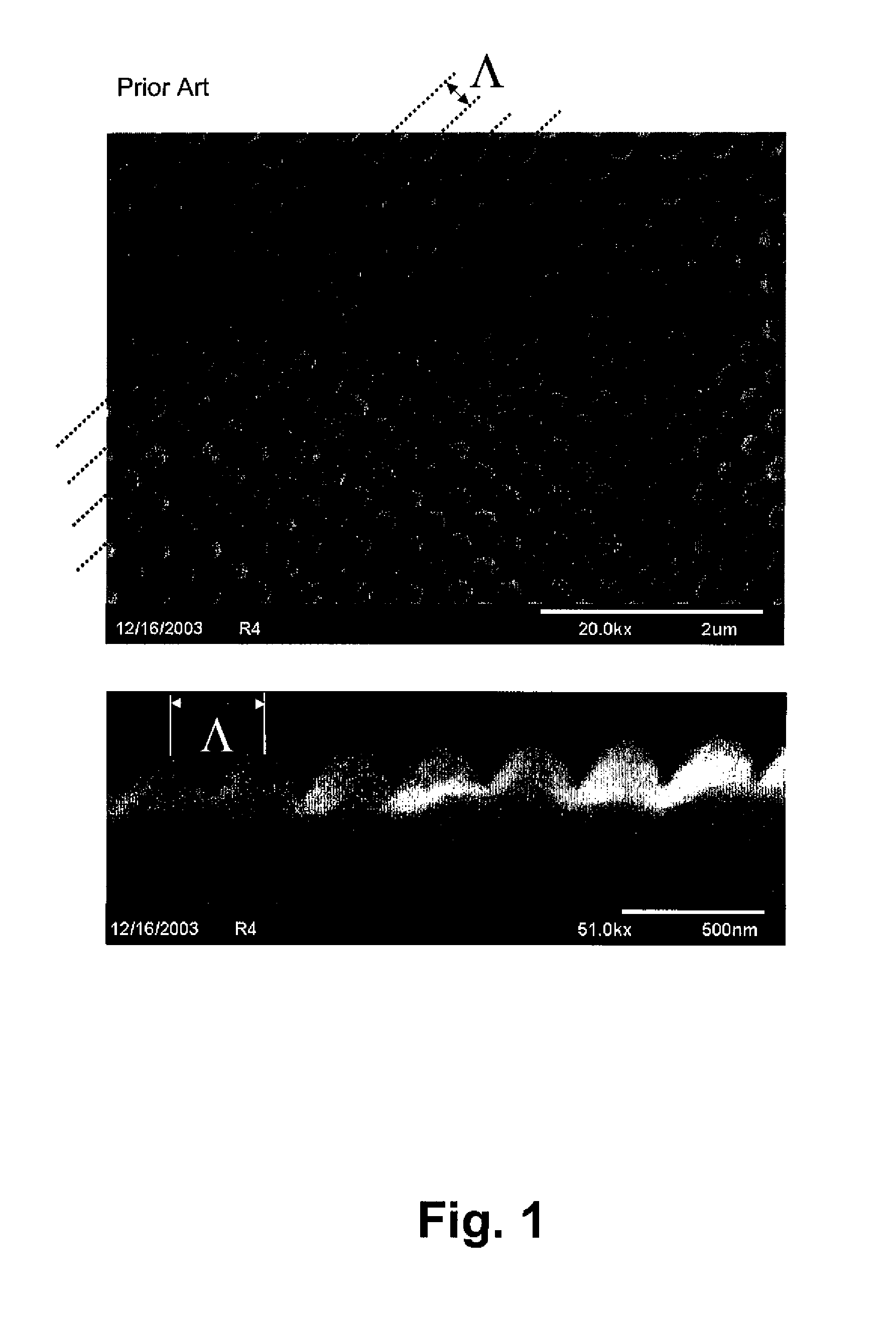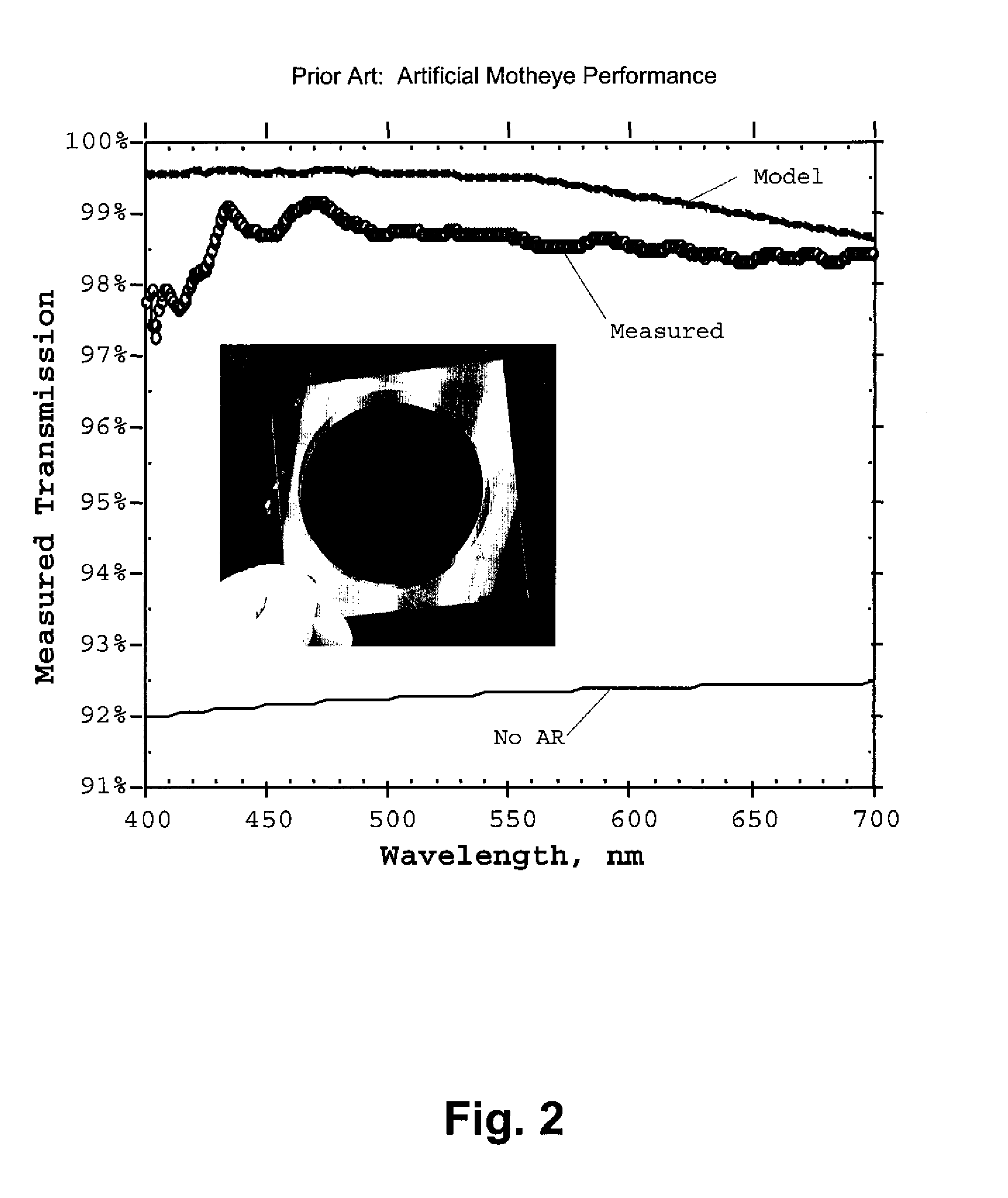Random texture anti-reflection optical surface treatment
- Summary
- Abstract
- Description
- Claims
- Application Information
AI Technical Summary
Benefits of technology
Problems solved by technology
Method used
Image
Examples
Embodiment Construction
[0062]A description of preferred embodiments of the invention follows.
[0063]FIG. 1 shows scanning electron microscope (SEM) photographs of a Motheye anti-reflection texture molded in a plastic window by a direct casting process. An overhead view and a cross sectional profile are shown. Dashed lines indicate the pattern repeat period, or pitch, labeled as Λ. Cone structures are shown with a spacing of about 250 nanometer (nm), and a comparable depth. The texture is designed to suppress reflected light in the visible region.
[0064]The measured transmission of a Motheye anti-reflection texture similar to that shown in FIG. 1, is shown in FIG. 2. Motheye textures have been replicated in a hardened polymer on both surfaces of a glass window. The transmission through the window is about 99% for most of the visible light spectrum from 400 to 700 nm. This compares favorably to the average 92% transmission of the glass window with no anti-reflection treatment, also shown in the figure. A theo...
PUM
| Property | Measurement | Unit |
|---|---|---|
| Fraction | aaaaa | aaaaa |
| Fraction | aaaaa | aaaaa |
| Angle | aaaaa | aaaaa |
Abstract
Description
Claims
Application Information
 Login to View More
Login to View More - R&D
- Intellectual Property
- Life Sciences
- Materials
- Tech Scout
- Unparalleled Data Quality
- Higher Quality Content
- 60% Fewer Hallucinations
Browse by: Latest US Patents, China's latest patents, Technical Efficacy Thesaurus, Application Domain, Technology Topic, Popular Technical Reports.
© 2025 PatSnap. All rights reserved.Legal|Privacy policy|Modern Slavery Act Transparency Statement|Sitemap|About US| Contact US: help@patsnap.com



